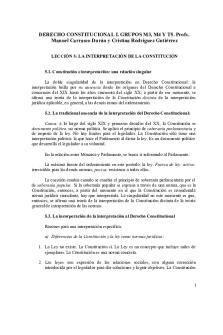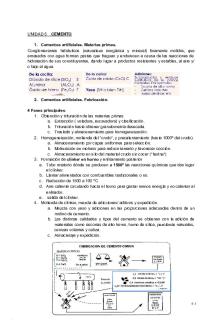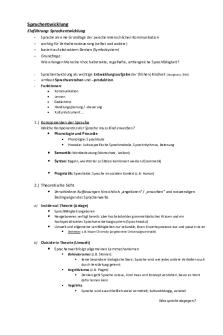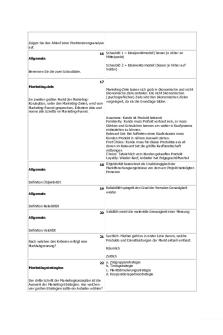5 - CTTO PDF

| Title | 5 - CTTO |
|---|---|
| Author | Anonymous User |
| Course | ACCOUNTANCY |
| Institution | Our Lady of Fatima University |
| Pages | 3 |
| File Size | 76.4 KB |
| File Type | |
| Total Downloads | 92 |
| Total Views | 181 |
Summary
CTTO...
Description
In order for a cost to be capitalized (capital expenditure), the following must be present: a. The useful life of an asset must be increased. b. The quantity of assets must be increased. c. The quality of assets must be increased. d. Any one of these. 55.
An improvement made to a machine increased its fair value and its production capacity by 25% without extending the machine's useful life. The cost of the improvement should be a. expensed. b. debited to accumulated depreciation. c. capitalized in the machine account. d. allocated between accumulated depreciation and the machine account.
56.
Which of the following is a capital expenditure? a. Payment of an account payable b. Retirement of bonds payable c. Payment of Federal income taxes d. None of these
57.
Which of the following is not a capital expenditure? a. Repairs that maintain an asset in operating condition b. An addition c. A betterment d. A replacement
P
In accounting for plant assets, which of the following outlays made subsequent to acquisition should be fully expensed in the period the expenditure is made? a. Expenditure made to increase the efficiency or effectiveness of an existing asset b. Expenditure made to extend the useful life of an existing asset beyond the time frame originally anticipated c. Expenditure made to maintain an existing asset so that it can function in the manner intended d. Expenditure made to add new asset services
S
An expenditure made in connection with a machine being used by an enterprise should be a. expensed immediately if it merely extends the useful life but does not improve the quality. b. expensed immediately if it merely improves the quality but does not extend the useful life. c. capitalized if it maintains the machine in normal operating condition. d. capitalized if it increases the quantity of units produced by the machine.
S
60.
When a plant asset is disposed of, a gain or loss may result. The gain or loss would be classified as an extraordinary item on the income statement if it resulted from a. an involuntary conversion and the conditions of the disposition are unusual and infrequent in nature. b. a sale prior to the completion of the estimated useful life of the asset. c. the sale of a fully depreciated asset. d. an abandonment of the asset.
61.
The sale of a depreciable asset resulting in a loss indicates that the proceeds from the sale were a. less than current fair value. b. greater than cost. c. greater than book value. d. less than book value.
62.
Which of the following statements about involuntary conversions is false? a. An involuntary conversion may result from condemnation or fire. b. The gain or loss from an involuntary conversion may be reported as an extraordinary item. c. The gain or loss from an involuntary conversion should not be recognized when the enterprise reinvests in replacement assets. d. All of these.
58.
59.
Multiple Choice Answers—Conceptual Item
21. 22. 23. 24. 25. 26.
Ans
d b d c c c
Item
27. 28. 29. 30. 31. 32.
Ans
d a b b d d
Item
33. 34. 35. 36. 37. 38.
Ans.
d a c a b b
Item
39. 40. 41. 42. 43. 44.
Ans
Item
Ans
Item
Ans
Item
Ans.
d d c a c a
45. 46. 47. 48. 49. 50.
a b c d d a
51. 52. 53. 54. 55. 56.
c b b d c d
57. 58. 59. 60. 61. 62.
a c d a d c
Solutions to those Multiple Choice questions for which the answer is “none of these.” 21.
Long-lived tangible assets used in the enterprise’s operations.
40.
Capitalized interest is depreciated over the related asset’s useful life.
56.
Capital expenditures include additions, betterments, improvements, and extraordinary repairs....
Similar Free PDFs

5 - CTTO
- 3 Pages

MR. LOK - ctto
- 3 Pages

5
- 4 Pages

5
- 1 Pages

Test 5 - Test 5
- 6 Pages

TEMA 5 - Apuntes 5
- 2 Pages

5 Heladas - Apuntes 5
- 17 Pages

Session 5 - ELS 5
- 2 Pages

TEMA 5 - Apuntes 5
- 3 Pages

Leccion 5 - Apuntes 5
- 10 Pages

5. Cementos - Apuntes 5
- 10 Pages

TEMA 5 - Apuntes 5
- 6 Pages

TEMA 5 - Apuntes 5
- 2 Pages

Chapter 5 quiz #5
- 2 Pages
Popular Institutions
- Tinajero National High School - Annex
- Politeknik Caltex Riau
- Yokohama City University
- SGT University
- University of Al-Qadisiyah
- Divine Word College of Vigan
- Techniek College Rotterdam
- Universidade de Santiago
- Universiti Teknologi MARA Cawangan Johor Kampus Pasir Gudang
- Poltekkes Kemenkes Yogyakarta
- Baguio City National High School
- Colegio san marcos
- preparatoria uno
- Centro de Bachillerato Tecnológico Industrial y de Servicios No. 107
- Dalian Maritime University
- Quang Trung Secondary School
- Colegio Tecnológico en Informática
- Corporación Regional de Educación Superior
- Grupo CEDVA
- Dar Al Uloom University
- Centro de Estudios Preuniversitarios de la Universidad Nacional de Ingeniería
- 上智大学
- Aakash International School, Nuna Majara
- San Felipe Neri Catholic School
- Kang Chiao International School - New Taipei City
- Misamis Occidental National High School
- Institución Educativa Escuela Normal Juan Ladrilleros
- Kolehiyo ng Pantukan
- Batanes State College
- Instituto Continental
- Sekolah Menengah Kejuruan Kesehatan Kaltara (Tarakan)
- Colegio de La Inmaculada Concepcion - Cebu

